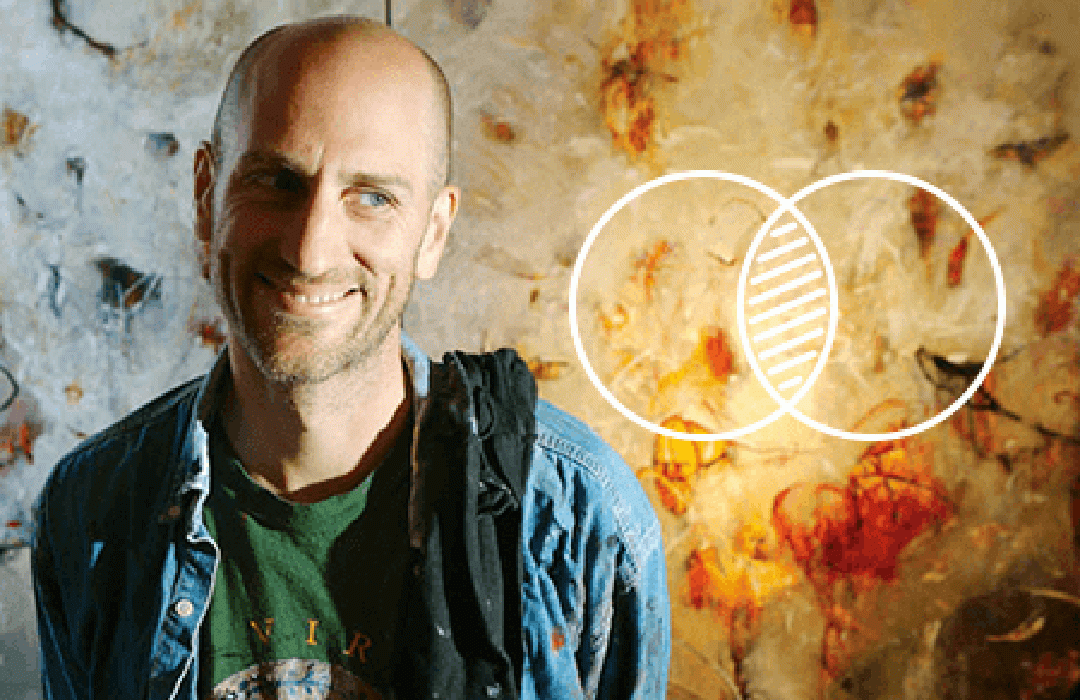The chalkboard in Schultheis’s mathematics classes in college and the whiteboards on which he brainstormed ideas and wrote equations at Microsoft had always struck him as aesthetically pleasing and beautiful in their own right. Their surfaces marked by layers of written, rewritten and half-erased equations continue to influence the composition and size of Schultheis’s paintings.
Art critic Patricia Watkinson has hailed Schultheis as a painter uniquely influenced by the ancient Greek mathematician Archimedes. The economist mathematician turned artist goes beyond the “simple high school geometry used by practitioners of Geometric Abstraction” to employ “a broader range of non-Euclidean methodologies as well as calculus, econometrics and trigonometry” in his paintings. Yet one doesn’t have to be a mathematician to appreciate the beauty of Schultheis’s conceptual paintings.
His latest series of paintings “Venn Pirouettes” is on display in a solo exhibition at the Winston Wachter Fine Art gallery in Seattle, Washington, until October 17. The paintings reflect the abstract world of numbers by mingling expressionistic, luminous brushstrokes with actual equations resulting in a unique depiction where human life and relationships are translated via mathematics as “velocity, eccentricity and radius.”
In a video, Schultheis explains the theoretical basis of his art in Venn Pirouettes.
“I am mapping out interior consciousness and interior portraiture, not the exterior of someone but how they move through life with another person in a relationship and how that relationship changes over time. By including the element of time in the equations, I am introducing variation and dynamic visual storytelling within the geometry of paintings.”
Venn pirouettes depict two time variables to map how a person’s consciousness changes (tau) and when that occurs in their lives (phi). The interplay gives rise to shifting geometric forms. “Visually, this is similar to the geometry mapped out by a ballet dancer who creates a gestural form with their arms, and then spins up into a pirouette,” observes Schultheis.
Schultheis has presented work in over 60 solo exhibitions across the country. His art appears in collections by the National Academy of Sciences in Washington D.C. and U.S. Embassies in Greece and Switzerland. He has lectured at various universities and his paintings have been featured in several national media including The Wall Street Journal and NPR.
2016-2017 was the year of SPARK at Oregon State University, a yearlong calendar of more than 60 events that celebrated the rich convergence and partnership between arts and science on campus and in our society. The ART:SCI Lecture Series continues Oregon State’s enthusiastic support and encouragement for multidisciplinary innovation that transcend the boundaries of arts and science.





